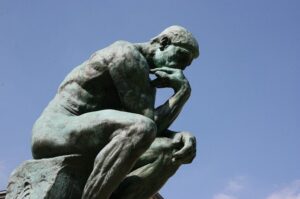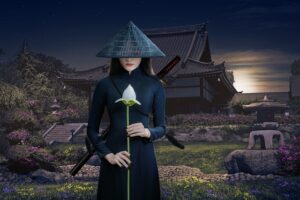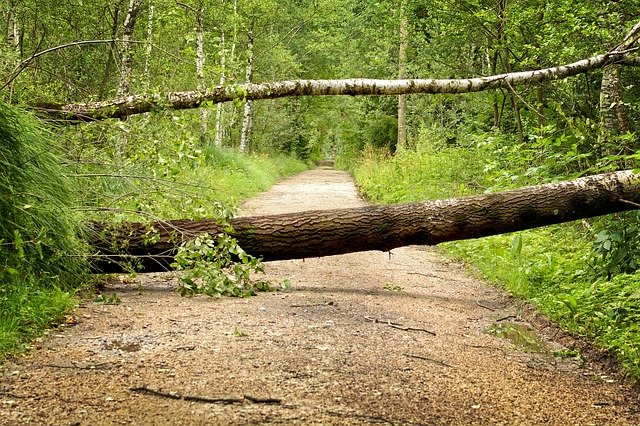What makes a good thriller novel? Types of conflict. You can break down the types of conflict into two categories: external and internal.
External conflicts are the problems that occur in the outside world, such as a serial killer or kidnapping victim. Internal conflicts are problems that arise inside the protagonist’s mind, such as family issues or anxiety about one’s career choice or one’s addiction.
This blog post will explore seven types of conflict and how they play out in different thrillers.
The protagonist’s problem
The protagonist’s problem is the central conflict they must face. It’s best to introduce it early – in chapter one or two of a thriller novel – and it usually grows over time into something more complex by the end of the book. The problem can be internal (such as anxiety about an upcoming medical exam) or external (a kidnapping). Either way, this type of conflict plays out through almost every part of a story’s plot!
Problem
The protagonist tries to solve their problems and conflicts by using various methods and strategies. These can include talking with other characters, researching an answer on the internet, or even just taking action without any plan at all! The protagonist’s problem-solving strategy is often called their “quest” throughout the story – they are trying to find out where that quest will lead them by the end of the book!
Internal conflict

The protagonist faces many emotional struggles. They may be afraid, stressed out, or anxious about different things in the story. Internal conflict is a character’s feelings and emotions – it can be pretty heavy!
Here are four common triggers of internal conflict:
Desire for what they want
Need for survival
Duty or obligation they feel is necessary
Fear or an intense worry that drives them
These conflicts also develop throughout the book as the protagonist’s problems change over time.
Here is an example:
Susan sped away from Mark’s house with her heart banging so hard on her ribs it made her cough. A few blocks away, she pulled up to an empty bus stop to catch her breath. She clutched her hot cheeks. That was stupid, stupid, stupid! What was I thinking?
Staring out at traffic swishing by, she tried to make sense of what had happened. She’d walked into the lion’s den even though her gut reaction told her not to. So what was that all about? I thought I had more sense. He had surprised her with his physical strength. If it hadn’t been for her martial arts training, she doubted she would have been able to stop him from raping her.
She looked at her shaking hands on the steering wheel and lowered them to her lap. Settle down, she told herself. Relax. I’m okay. I can deal with this. I’m responsible. I can handle it.
She jumped and stared out the window at a man asking if she was okay. Relieved it wasn’t Mark, she tried a smile, wagged her hand, said she was fine, then pulled out.
Make sure you’re writing a lot about emotional things because readers will want to know what your character is thinking and feeling during all those action moments!
External conflict
External conflict is essentially the outside forces that pressure the protagonist into action. There are two main types of external conflicts for your protagonist to deal with: obstacles/problems and other people’s needs/wants.
Obstacles/problems are the most common type of conflict in thrillers because it’s usually around them that we find out about a protagonist’s weaknesses or strengths; without these, there wouldn’t be much character development!
An excellent way to think of obstacles is like physical blocks: what would happen if your main character couldn’t get past something (a locked door) and had to go round it (by climbing through a window)? What sort of skills could she use? How might this affect other characters’ actions toward her? These questions should give you some ideas for obstacles – don’t forget other people can also create problems for your protagonist!
Examples of external conflict:
The Totalitarian Society in The Handmaid’s Tale
The Joker and Batman in The Dark Knight
The divorce in Kramer vs. Kramer
The shark in Jaws
The dinosaurs in Jurassic Park
Another essential aspect is other people’s needs/wants. These show up very often in thrillers because they are critical for the story and easy to understand.
Seven types of conflict in fiction

1. Character vs. character
The first type of conflict is character vs. character, a battle of the wits between two characters. This conflict will often play out between a protagonist and their antagonist, but it could also be another character.
The outcome can bring about maturity and growth or restoration of peace in the protagonist’s world.
2. Character vs. society
The second type of conflict is character vs. society, which means that groups, institutions, and society challenge the protagonist.
For example, the main character in “Breaking Bad” was doing meth to support his family after being diagnosed with cancer; however, this breaks societal laws and values (drugs are illegal).
3. Character vs. nature
The third type of conflict is character vs. nature, which means any inner struggle or personal demons battling against their surroundings, such as natural disasters like hurricanes, earthquakes, etc.
Great examples of the character vs. nature conflict from literature are Hemingway’s The Old Man and the Sea and the film that tells the story of Andrea Gail. After being caught in The Perfect Storm, this commercial fishing vessel was lost at sea with all hands.
4. Character vs. technology

The fourth type of conflict is character vs. technology when a protagonist faces machines or technology that has become too powerful or is being used by another force for evil – and must prevail against it.
Frankenstein is a classic example of character versus technology, as he brings a being to life by sewing together body parts from a graveyard. Despite having good intentions, the monster he creates frightens all he encounters.
5. Character vs. supernatural
The fifth type of conflict is character vs. supernatural. Again, the main character is battling against supernatural forces or entities, such as zombies, vampires, fate, magical powers, otherworldly beings, religion, or deities.
6. Character vs. fate
The sixth type of conflict is character vs. fate. The main character is battling against an inevitable fate they cannot avoid, such as destiny – something is predetermined or foreordained, and the character somehow opposes that.
7. Character vs. self
The seventh type of conflict is character vs. self, which is a type of conflict that takes place inside a character’s mind, such as holding in mental pain or any inner struggle or personal demons fighting against themselves.
In Shakespeare’s play Hamlet, Prince Hamlet is probably the most well-known literary character experiencing character vs. self-conflict.
Ernest Hemingway’s The Old Man and the Sea is about an aging fisherman down on his luck. On the surface, this story embodies character vs. nature conflict. Still, Santiago is engaged in a physical struggle with a giant marlin (and later, sharks) for most of the novel’s action. But in the days that Santiago spends alone at sea, he confronts his mortality, self-doubt, and place within nature.
Conclusion
These types of conflict should give you a good idea of what a protagonist or main character needs to go through for the story to have a good book. Of course, not all of these types of conflict are necessary, but there must be some struggle throughout the novel, so the reader continues reading until they see how things turn out at the end.
If you’re working on your first novel and are looking for more help with your writing, please check out my other articles at https://ullahakanson.com/blog/
Happy writing!
Ulla


The 8 Best Psychological Thrillers to Read for New Authors
[…] open eyes. He’s a good person with a solid moral code. He’s real: he has real fears, conflicts with others, problems in his relationships. He’s the one you’ll be rooting for when he fights for […]
Types of Plot Twists in Thriller Novels: Techniques and Examples
[…] twists are used for many different reasons, including suspense, added conflict, and unexpected endings, which is why they should always be well thought out ahead of time to avoid […]
How to Create a Villain Character: 7 Developmental Steps
[…] you are using. When developing these characters, it’s important to remember there needs to be some conflict or reason for our protagonist to oppose them for us as audience members to find interest in their […]